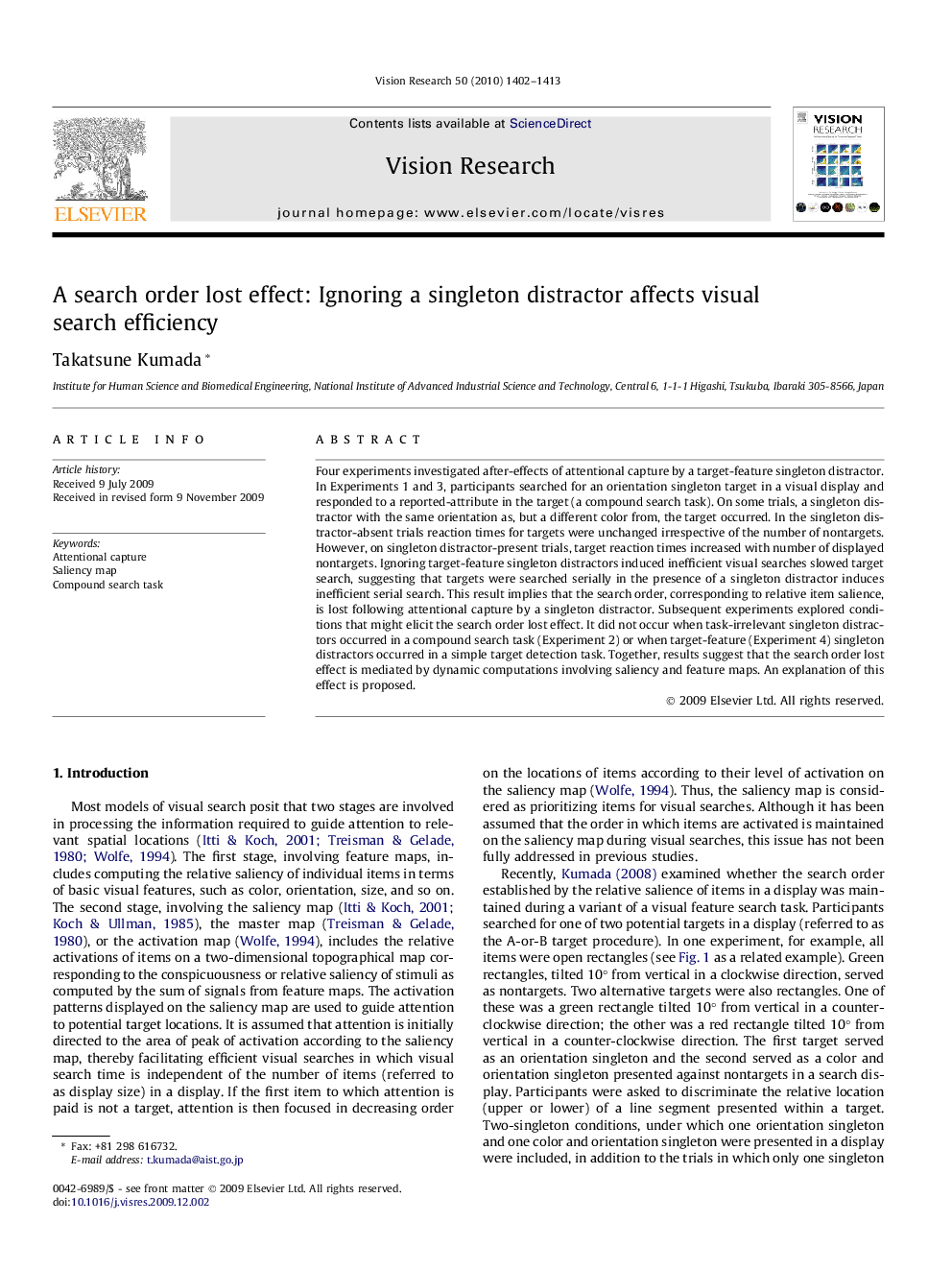| Article ID | Journal | Published Year | Pages | File Type |
|---|---|---|---|---|
| 4034474 | Vision Research | 2010 | 12 Pages |
Four experiments investigated after-effects of attentional capture by a target-feature singleton distractor. In Experiments 1 and 3, participants searched for an orientation singleton target in a visual display and responded to a reported-attribute in the target (a compound search task). On some trials, a singleton distractor with the same orientation as, but a different color from, the target occurred. In the singleton distractor-absent trials reaction times for targets were unchanged irrespective of the number of nontargets. However, on singleton distractor-present trials, target reaction times increased with number of displayed nontargets. Ignoring target-feature singleton distractors induced inefficient visual searches slowed target search, suggesting that targets were searched serially in the presence of a singleton distractor induces inefficient serial search. This result implies that the search order, corresponding to relative item salience, is lost following attentional capture by a singleton distractor. Subsequent experiments explored conditions that might elicit the search order lost effect. It did not occur when task-irrelevant singleton distractors occurred in a compound search task (Experiment 2) or when target-feature (Experiment 4) singleton distractors occurred in a simple target detection task. Together, results suggest that the search order lost effect is mediated by dynamic computations involving saliency and feature maps. An explanation of this effect is proposed.
